
Malaysian Journal of Soil Science
Scope & Guideline
Transforming Soil Health Through Cutting-edge Research.
Introduction
Aims and Scopes
- Soil Quality Assessment:
Research focused on evaluating various aspects of soil quality, including physical, chemical, and biological properties, to inform agricultural practices and land management. - Soil Fertility and Nutrient Management:
Investigations into soil fertility levels, the impact of different fertilizers (organic and inorganic), and nutrient management strategies aimed at optimizing agricultural productivity. - Soil Remediation and Amelioration Techniques:
Studies that explore methods to improve soil health, such as the use of biochar, organic amendments, and innovative agricultural practices to restore degraded soils. - Impact of Land Use and Vegetation on Soil Properties:
Research examining how different land use practices and vegetation types influence soil characteristics and ecosystem functions. - Soil Microbial Dynamics and Plant Interactions:
Exploration of soil microbiology, including the role of rhizobia, mycorrhizae, and other beneficial microorganisms in enhancing plant growth and soil health. - Spatial Variability of Soil Properties:
Studies utilizing spatial analysis techniques to assess the variability of soil properties across different landscapes and management zones.
Trending and Emerging
- Sustainable Soil Management Practices:
Growing emphasis on research that develops and evaluates sustainable practices, such as agroecological approaches and organic farming techniques, which support soil health and productivity. - Utilization of Biochar and Organic Amendments:
Increasing interest in the application of biochar and other organic amendments as a means to improve soil health, reduce nutrient leaching, and sequester carbon. - Climate Change Impacts on Soil Systems:
Emerging studies focusing on how climate change affects soil properties, processes, and management practices, highlighting the need for adaptive strategies in agriculture. - Technological Innovations in Soil Analysis:
Recent trends indicate a rise in the use of advanced technologies, such as remote sensing and machine learning, for soil analysis and monitoring, enhancing precision agriculture. - Interdisciplinary Research Linking Soil with Other Environmental Factors:
A trend towards interdisciplinary studies that link soil science with hydrology, ecology, and climate science to better understand the interactions within ecosystems.
Declining or Waning
- Traditional Soil Fertility Studies:
While soil fertility remains important, there has been a noticeable decline in traditional studies focusing solely on chemical analyses, with a shift towards integrated approaches that consider biological and physical aspects. - Basic Soil Physics Research:
Research purely centered on fundamental soil physics principles appears to be waning, as newer studies integrate these concepts with practical applications in agriculture and environmental science. - Long-term Soil Monitoring Studies:
The frequency of long-term monitoring studies has decreased, possibly due to a growing emphasis on immediate, applied research that addresses current agricultural challenges. - Single-factor Experimental Designs:
There is a reduced emphasis on studies that focus on single factors affecting soil properties, as multi-factorial approaches become more prevalent in capturing the complexity of soil interactions.
Similar Journals

Soil Science Annual
Bridging science and sustainability in soil studies.Soil Science Annual, published by Polskie Towarzystwo Gleboznawc, is an esteemed open-access journal dedicated to advancing the field of soil science and related disciplines. With its ISSN 2300-4967 and E-ISSN 2300-4975, this journal has been pivotal since its inception in 2012, providing a vital platform for researchers, professionals, and students to share innovative findings and insights. The 2023 Scopus rankings place the journal in Q2 for Earth and Planetary Sciences (miscellaneous), and Q3 for both Environmental Science (miscellaneous) and Soil Science, underscoring its influence and contribution to these fields. Housed in Warsaw, Poland, the journal fosters scholarly dialogue and dissemination of research findings critical to understanding soil mechanics, conservation practices, and sustainable land use. With its open-access model, Soil Science Annual ensures that research is accessible to a broad audience, encouraging collaboration and innovation in tackling global environmental challenges.
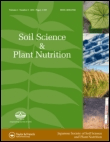
SOIL SCIENCE AND PLANT NUTRITION
Bridging science and sustainability in plant nutrition.SOIL SCIENCE AND PLANT NUTRITION, published by Taylor & Francis Ltd, stands as a prominent journal in the fields of plant science and soil science, with its impact reflected in its Q2 ranking across both categories in 2023. Established in 1955, this journal provides a vital platform for researchers, professionals, and students dedicated to understanding the complex interactions between soil and plant nutrition, with an emphasis on advancing sustainable agricultural practices. With an impressive Scopus ranking, placing it in the 75th percentile for Plant Science and the 71st for Soil Science, it attracts high-quality, peer-reviewed articles that contribute significantly to the body of knowledge in these disciplines. While the journal does not currently offer Open Access options, its comprehensive scope encompasses studies from fundamental research to applied science, making it an essential resource for anyone engaged in soil management, agronomy, or related fields.

EGYPTIAN JOURNAL OF SOIL SCIENCE
Cultivating Knowledge in Soil Management and ConservationEGYPTIAN JOURNAL OF SOIL SCIENCE is a renowned publication dedicated to advancing the field of soil science, particularly within the context of Egypt and the broader regions of the Middle East and North Africa. Published by the NATIONAL INFORMATION DOCUMENTATION CENTER, ACADEMIC SCIENTIFIC RESEARCH & TECHNOLOGY, this journal aims to disseminate high-quality research and innovative practices related to soil management, conservation, and sustainable agricultural practices. With an emphasis on empirical studies, reviews, and methodologies relevant to soil health and productivity, this journal serves as an essential resource for researchers, professionals, and students alike. Although specific access options are not highlighted, the journal’s commitment to promoting scholarly discourse ensures that important findings within soil science are made available to wider audiences, contributing significantly to environmental science, agronomy, and ecological preservation.

Crop Forage & Turfgrass Management
Exploring solutions for sustainable agriculture.Crop Forage & Turfgrass Management, published by WILEY, serves as an essential platform for researchers, professionals, and students in the fields of agronomy, crop science, plant science, and soil science. With a focus on advancing knowledge in the management of crops, forage systems, and turfgrass, this journal plays a pivotal role in disseminating innovative research and practical applications that drive agricultural sustainability and productivity. Despite its Q3 ranking in various agricultural and biological science categories according to Scopus, it aims to enhance its impact and relevance in the academic community through high-quality publications. As a journal converged from 2015 to 2024, it invites contributions that address contemporary challenges and solutions in crop management, ensuring accessibility to vital knowledge for the advancement of agricultural practices. Situated in the United States, it also reflects the diverse agricultural landscapes and practices of the region, making it a valuable resource for a global audience.

PLANT SOIL AND ENVIRONMENT
Connecting Soil Health to Ecosystem Prosperity.PLANT SOIL AND ENVIRONMENT is a premier open-access journal dedicated to the interdisciplinary study of soil science, agronomy, and environmental interactions, published by the Czech Academy Agricultural Sciences. With an ISSN of 1214-1178 and E-ISSN 1805-9368, this journal has been a vital platform for dissemination of research since its inception in 2002. Based in the Czech Republic, it has garnered a robust reputation within its field, as indicated by its impressive Q2 ranking in Soil Science and ranking #47 out of 159 in the Scopus Ranks for Agricultural and Biological Sciences, placing it in the 70th percentile overall. The journal explores diverse topics within soils and their significant roles in plant health, ecosystem services, and sustainable agricultural practices, contributing important insights that benefit researchers, practitioners, and policy-makers alike. Aiming for a global outreach, PLANT SOIL AND ENVIRONMENT not only facilitates open dialogue among scientists but also ensures that cutting-edge research is freely accessible to enhance the knowledge base in soil science.

Soil Research
Advancing soil science for a sustainable future.Soil Research, published by CSIRO PUBLISHING, is an esteemed scholarly journal dedicated to advancing the field of soil science, environmental science, and earth-surface processes. With an ISSN of 1838-675X and E-ISSN of 1838-6768, this journal serves as a vital platform for researchers and professionals to disseminate innovative findings and engage with contemporary challenges in soil and environmental management. The journal is recognized for its impactful contributions, as evidenced by its Q2 ranking in 2023 across multiple categories including Earth-Surface Processes, Environmental Science, and Soil Science, reflecting its influence and relevance in these critical academic areas. Operating from its headquarters in Clayton, Victoria, Australia, Soil Research is committed to fostering open access to research, ensuring wider dissemination of knowledge. As it converges toward its future objectives until 2024, the journal aims to provide a forum for diverse perspectives that enhance understanding and stewardship of soil resources, making it an indispensable resource for students, researchers, and industry professionals alike.
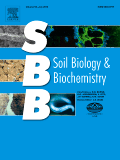
SOIL BIOLOGY & BIOCHEMISTRY
Pioneering Research in Soil and Microbial DynamicsSOIL BIOLOGY & BIOCHEMISTRY, published by Pergamon-Elsevier Science Ltd, is a premier academic journal that plays a pivotal role in advancing the fields of microbiology and soil science. Established in 1969, this esteemed journal has gained recognition for its rigorous publication standards and impactful research contributions, evidenced by its prestigious Q1 rankings in both Microbiology and Soil Science categories for 2023. With an impressive Scopus rank of #3 among 159 in Agricultural and Biological Sciences and #14 among 182 in Immunology and Microbiology, it boasts a notable 98th percentile in its field. The journal offers researchers, professionals, and students a vital platform for sharing innovative studies and insights about soil ecosystems and their biochemical processes, fostering greater understanding and collaboration within the scientific community. While Open Access options are currently not available, the journal remains a cornerstone for those seeking to deepen their knowledge and contribute significantly to soil biology and biochemistry.
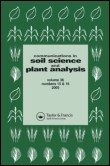
COMMUNICATIONS IN SOIL SCIENCE AND PLANT ANALYSIS
Empowering Researchers to Transform Agricultural PracticesCOMMUNICATIONS IN SOIL SCIENCE AND PLANT ANALYSIS, published by Taylor & Francis Inc, is a prestigious journal dedicated to advancing research in the fields of agronomy, crop science, and soil science. Established in 1970, the journal has maintained a significant presence over the years, with a commitment to publishing high-quality, peer-reviewed articles that contribute to the understanding of soil and plant interactions. With an impressive Q2 ranking in both Agronomy and Soil Science, it positions itself as a vital resource for researchers, professionals, and students alike, keen on exploring innovative solutions to contemporary agricultural challenges. Although it currently does not provide open access, the journal ensures wide dissemination through its established subscription services. The journal's focus on empirical research, methodologies, and technological advancements in soil management and plant nutrition makes it an essential platform for disseminating knowledge and fostering discussions within the scientific community. Located in the heart of Philadelphia, USA, it remains a significant contributor to the global dialogue on sustainable agriculture and environmental stewardship.
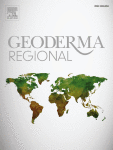
Geoderma Regional
Innovating research at the intersection of agriculture and biology.Geoderma Regional is a premier scholarly journal dedicated to advancing the field of Soil Science. Published by Elsevier in the Netherlands, this journal serves as a vital platform for disseminating high-quality, peer-reviewed research that spans the complexities of soil management, behavior, and the implications of soil processes on environmental sustainability. Since its inception in 2014, Geoderma Regional has achieved an impressive position within the academic community, holding a Q1 ranking in the field of Soil Science, placing it among the top 20% of journals in its category according to SCOPUS rankings. This journal is particularly distinguished for its significant contributions to the nexus between agriculture and biological sciences, reflected in its rank of #33 out of 159 in this field with a commendable 79th percentile. Researchers, professionals, and students alike will appreciate the journal's commitment to open discourse and innovative research agendas as it aspires to enhance our understanding of soil dynamics, addressing critical issues facing our planet.
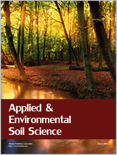
Applied and Environmental Soil Science
Driving impactful research for a sustainable future in soil science.Applied and Environmental Soil Science, an esteemed journal published by HINDAWI LTD, focuses on disseminating high-quality research in the fields of soil science and environmental applications. With an ISSN of 1687-7667 and an E-ISSN of 1687-7675, this open-access journal has been a vital resource for the academic community since its inception in 2009. As of 2023, it holds a commendable position in the Q2 category for both Earth-Surface Processes and Soil Science, highlighting its impact in these crucial disciplines. The journal’s rankings further affirm its significance within the field, being placed 61st in Earth and Planetary Sciences and 58th in Agricultural and Biological Sciences. Researchers and practitioners alike benefit from the collaborative platform it offers for sharing innovative studies essential for sustainable soil management and environmental integrity. With a focus on advancing knowledge and fostering interdisciplinary dialogue, Applied and Environmental Soil Science stands as a crucial pillar for scholars and professionals dedicated to addressing the pressing challenges of soil and environmental health.